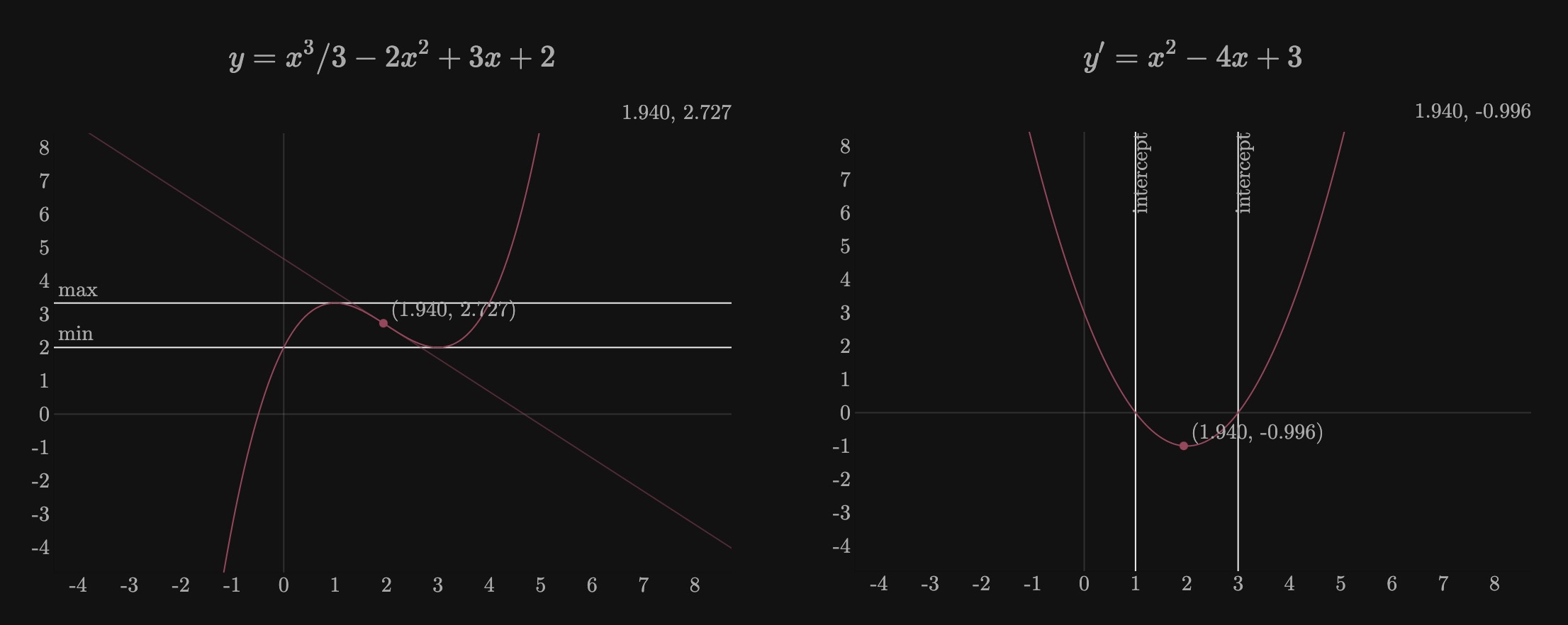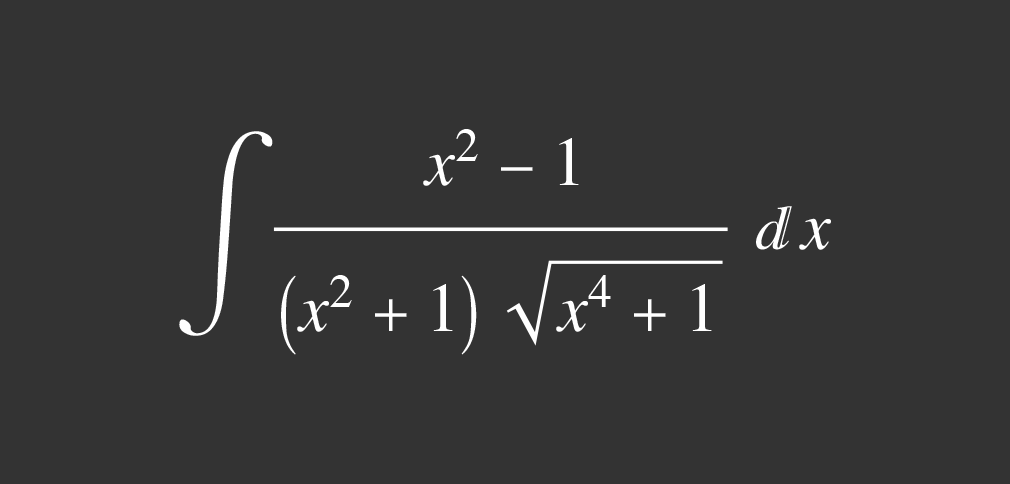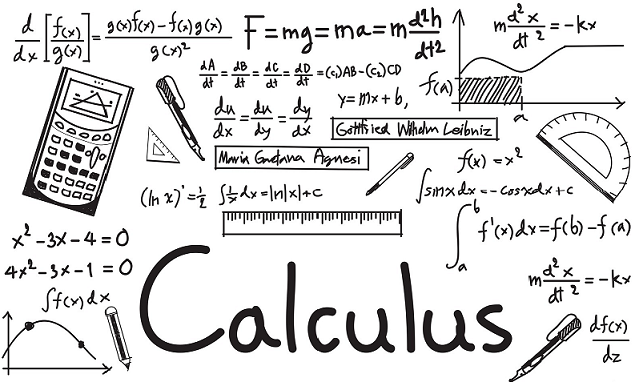Physical Interpretation of the Derivative
The primary concept of calculus deals with the rate of change of one variable with respect to another.
Instantaneous Speed
Let’s imagine a person who travels 90 km in 3 hours. Their average speed (rate of change of distance with respect to time) is 30 km/h. Of course, they don’t need to travel at that fixed speed; they may slow down or speed up at different times during their travel. For many purposes, it suffices to know the average speed.
However, in many daily happenings, the average speed is not a significant quantity. If a person traveling in an automobile strikes a tree, the quantity that matters is the speed at the instant of collision (this quantity might determine if they survive or not).
| Concept | Description |
|---|---|
| Interval | Happens over a period of time |
| Instant | Happens so fast that no time elapses |
Calculating the average speed is simple. By definition, it’s the rate of change of distance with respect to time.
The same computation process can’t be applied to get the instantaneous speed at some point in time. Since instantaneous means that the event happened in an infinitesimal or very short space of time, then distance and time might both be zero. Hence, using the average speed definition won’t help because
We can’t compute it with the knowledge we have right now, but we can surely approximate it. Let’s say that a ball is dropped near the surface of the Earth, and we want to know its instantaneous speed after 4 seconds. To calculate the instantaneous speed at any point in time, we need to know the distance it travels after some period of time. This relation can be expressed as a formula that relates distance and time traveled. The formula that relates the distance (in feet) to the time elapsed is:
We can calculate the distance the ball traveled after 4 seconds by replacing
Let’s also compute the distance the ball traveled after 5 seconds:
The average speed for this interval of time is then:
So the average speed during the fifth second is
Let’s register more computations of the above process with smaller and smaller intervals of time in a table:
|time elapsed after 4 seconds| 1| 0.1| 0.01| 0.001| 0.0001|
|average speed (in feet/s) |144|129.6|128.16|128.016|128.0016|
Of course, no matter how small the interval is, the result is not the instantaneous speed at the instant
Method of Increments
Let’s redo the process described above over an arbitrary interval of time. To do so, let’s introduce a quantity
The formula for the example above is:
When calculated once by the end of the fourth second, it is:
When substituted with the interval
Where
The average speed in this interval of time is then
To compute the instantaneous speed, the interval
Generalization
Let’s generalize the process above for
Subtracting
Dividing both sides by
Just as stated above, to compute the instantaneous speed, the interval
It has been customary since the days of Euler to use
It’s desirable to have some short notation for the statement that we have evaluated the limit of as the values of
Where lim is an abbreviation for limit, replacing
To some mathematicians, this notation is somewhat lengthy; hence, mathematicians replaced it with different variations:
The rate of change is not always related to time or distances. A generalization of the formulas above is needed. Instead of the symbols
Let’s calculate the instantaneous rate of change of
Subtracting
Dividing both sides by
The instantaneous rate of change of
We can also use the variations for the notation of the rate of change:
What we did with the process above was to find the instantaneous rate of change of
Geometric Interpretation of the Derivative
Let’s graph the following formula:
A point belonging to this geometrical representation of
Let’s say that
The slope is a quantity that describes the direction and steepness of a line and is calculated by finding the ratio of the vertical change to the horizontal change between any two distinct points on the line. The previous statement expressed as a formula is:
What if the movable point gets closer and closer to the fixed point such that
Let’s find the instantaneous rate of change of this function evaluated at
This fixed number is the value of the slope of the line tangent to the derivative function when it’s evaluated with
Substituting
If we graph this line next to the geometric representation of
Before finding the equation of the slope for any value of
Now that we have an idea of the values of the slope, let’s find the value of
By looking at the line, we confirm our expectation of the values. Any point which belongs to the line whose
There are infinite tangent lines to the curve that represents
Second Derivative
Going back to the falling object formula (
The instantaneous rate of change of the distance with respect to time is:
Now
The instantaneous acceleration obtained above is the derived function of the instantaneous speed, which is the derived function of the distance function. Then we can relate the instantaneous acceleration and the distance function with the following notation:
The function above is called the second derived function of
The Chain Rule
Physical problems lead to more complicated algebraic functions, for example,
If
Expressed in the function notation:
Then:
Returning to the original problem, let’s find the derivative of
Let
Differentiation of Implicit Functions
Going back to the definition of a function, it’s a relation between two variables such that given a value of one in some domain, there’s a unique value determined for the second variable. However, functions often occur in forms where giving the independent variable some value will not result in a unique value. For example, the equation of a circle of radius equal to 5 is:
Here,
We know that
Applying a differentiation process to
Solving for
Theorems on Differentiation
Read “Calculus: An Intuitive and Physical Approach”.
Applications of the Derivative
- Determination of the velocity and acceleration of a particle given its distance as a function of time.
- Concentrate light, sound, and radio waves in a particular direction (see the reflective property of the parabola ).
- Finding the maximum/minimum value of a function, i.e., find the largest/smallest value of
- Approximation of the roots of a polynomial with Newton’s method, described here .
Maxima/Minima
Let’s say that we throw an object into the air and we want to know the maximum height it acquires. As it rises, its velocity decreases, and when it reaches the highest point, its velocity is zero. We also know that the velocity is the instantaneous rate of change of height with respect to time; hence, the derivative is involved in this process, and therefore we expect it to be involved in other maxima/minima problems.
More generally, if
Let’s see an example. The following function has a maximum value of
Now the problem reduces to finding the points where
And we see that:
The process didn’t actually find the maximum/minimum values since for
Applications of Maxima/Minima
- Refraction of light: we can build a function of time which relates the velocity/distance the light travels in different mediums. Finding the derivative and making it equal to
- Finding the sides of the rectangle with the maximum perimeter.
Newton-Raphson Method
The slope of the tangent line of a function
Newton found out that if we find the intercept of this tangent line with the
If
Solving for
Finding the Square Root of a Number
Let’s say that we want to find the square root of a number
The function to use is then:
whose derivative is:
Substituting in
double square_root(double n) {
// initial guess
double EPS = 1e-15;
double x0 = 1;
while (true) {
double xi = (x0 + n / x0) / 2.0;
if (abs(x0 - xi) < EPS) {
break;
}
x0 = xi;
}
return x0;
}




